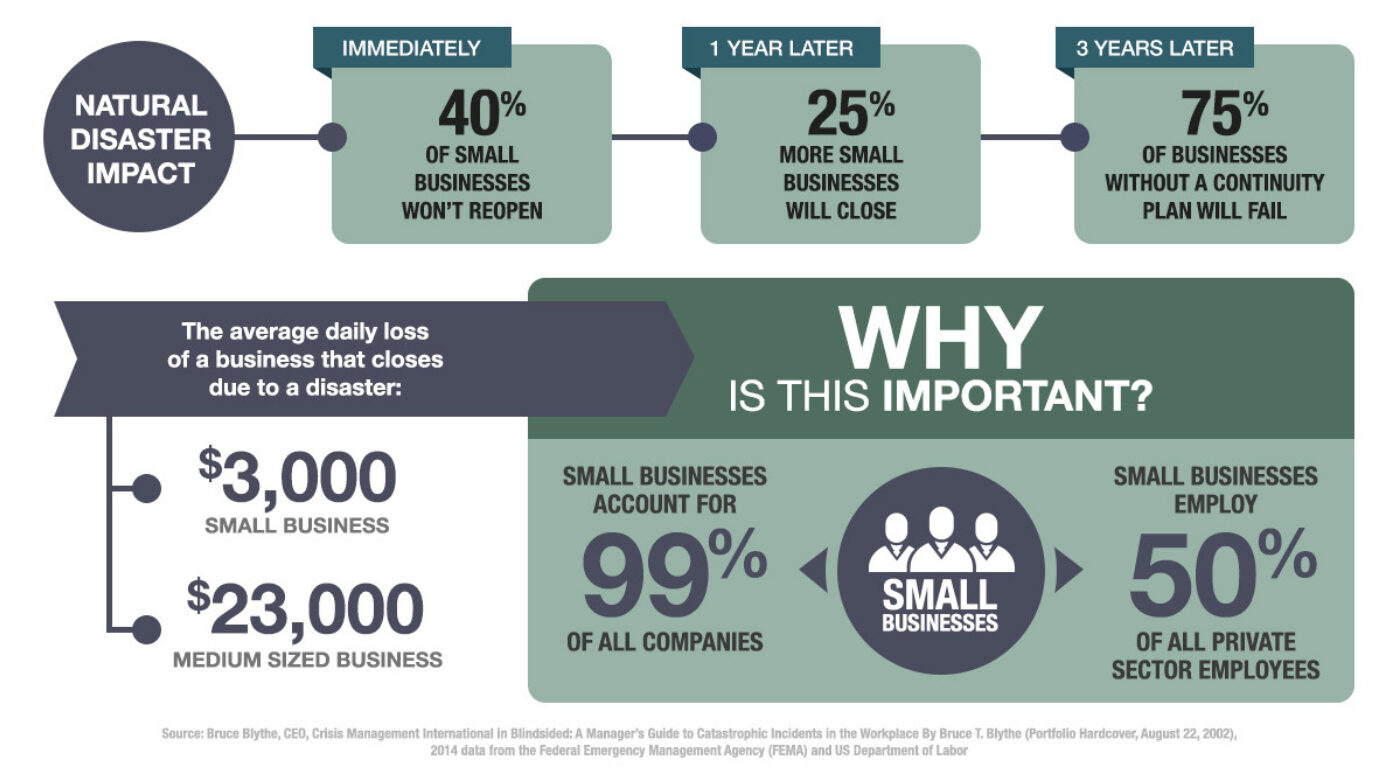Small businesses are the economic backbone of our communities--they employ half of all Americans working in the private sector, provide important local goods and services, and are an integral part of the character and social fabric of a community. For many of us, places like the corner coffee shop, neighborhood daycare provider, hometown mechanic, favorite mom-and-pop restaurant, and local barbershop are fixtures in our regular routine and part of how we define “home.”
As we celebrate the vital contributions that small businesses make in our communities and country during National Small Business Week this week - and with start of hurricane season just around the corner - it’s also important to think about how to safeguard small businesses from potential disruption and disaster.
Unlike their larger counterparts, small businesses are particularly vulnerable to the impacts of disaster, something SBP sees often in the areas we work. A Main Street full of shuttered local businesses in the wake of a catastrophic storm is a stark testament to the disruptive power of disasters, one that lingers long after those first few days and weeks. In fact, 40% of small businesses that close after a major disaster will never open their doors again. As time progresses, more of those impacted businesses will fail, most especially those that weren’t prepared.

One of the keys to the long term survival of any business—and an important aspect of fostering broader community resilience—is having emergency and continuity plans in place to protect people, assets and operations. More often than not, those businesses that survive after a disaster are the ones that planned ahead.
To aid businesses in their efforts to plan for disaster, SBP’s Disaster Resilience and Recovery Lab (DRRL) developed a preparedness training program based on lessons learned through our recovery experiences, and in collaboration with Zurich Insurance and other insurance industry and risk mitigation thought leaders. The program provides actionable guidance and tools for residents, businesses and nonprofit organizations on how to prepare for, and recover more quickly from, emergencies and disasters. As more and more communities are exposed to disaster—nearly 80% of Americans lived in a county with a federal disaster declaration issued from 2007-2013—proactive risk reduction becomes increasingly important.
For businesses, this means having plans in place to protect your:
People - An Occupational Safety and Health Administration (OSHA)-required emergency action plan for dealing with on-site emergency, sheltering, and evacuation situations, as well as encouraging staff preparedness at home.
Operations - A continuity plan to carry your business through minor disruptions (like a short term power outage) and major disasters (like a direct-hit hurricane), and a crisis communications plan to stay connected with staff and stakeholders during and after the emergency.
Information – Backing up and safely storing your business’s vital records.
Finances – Proper insurance coverage to mitigate the financial risks of damage and disruption—especially from flooding—and plans to ensure access to cash and credit needed to survive a period of disruption.
Property – Plans to secure your property in the event of an emergency and mitigating physical risk through storm resistant building and retrofitting techniques.
SBP has developed a checklist and resource guide to help small businesses get a jumpstart on the preparedness processes, as well as gathered a wealth of additional tools and resources available from our partners at FEMA, American Red Cross, Insurance Institute for Business and Home Safety, and elsewhere.
SBP’s mission as an organization is to shrink time between disaster and recovery, and we believe the most effective way to do so is through proactive risk reduction. If your business isn’t yet on the path to preparedness, we encourage you to take a look at our resources and get started today because you never know what tomorrow may bring, and the best recovery is the one that never has to happen in the first place.

